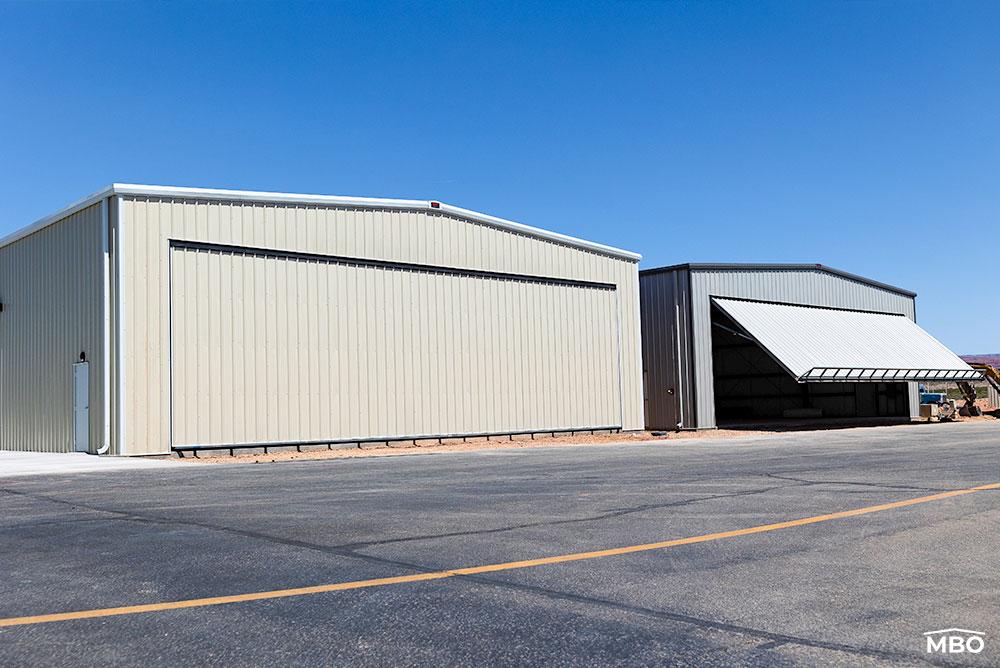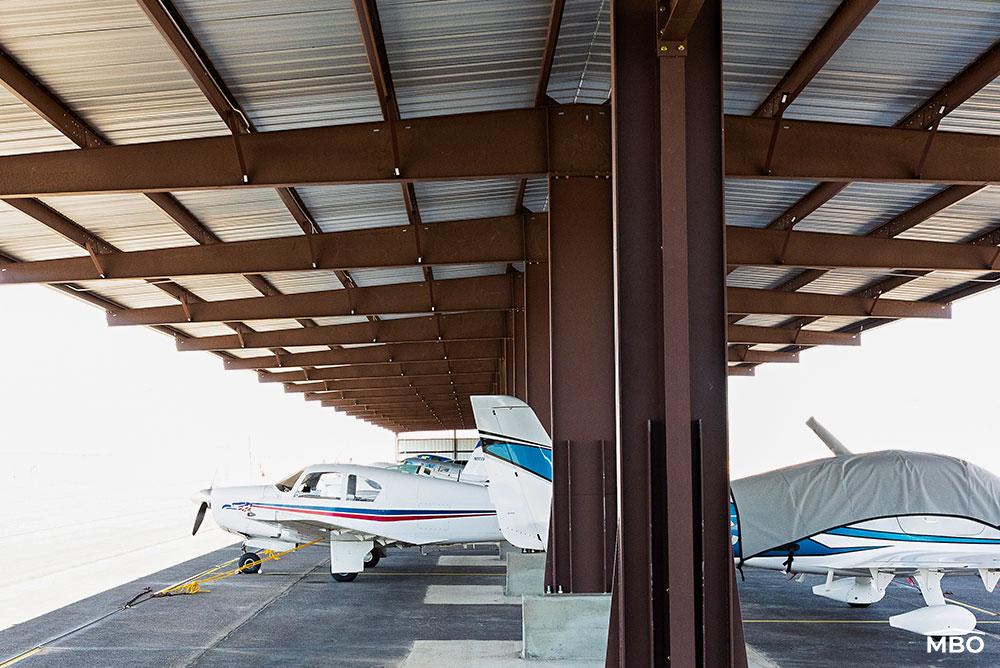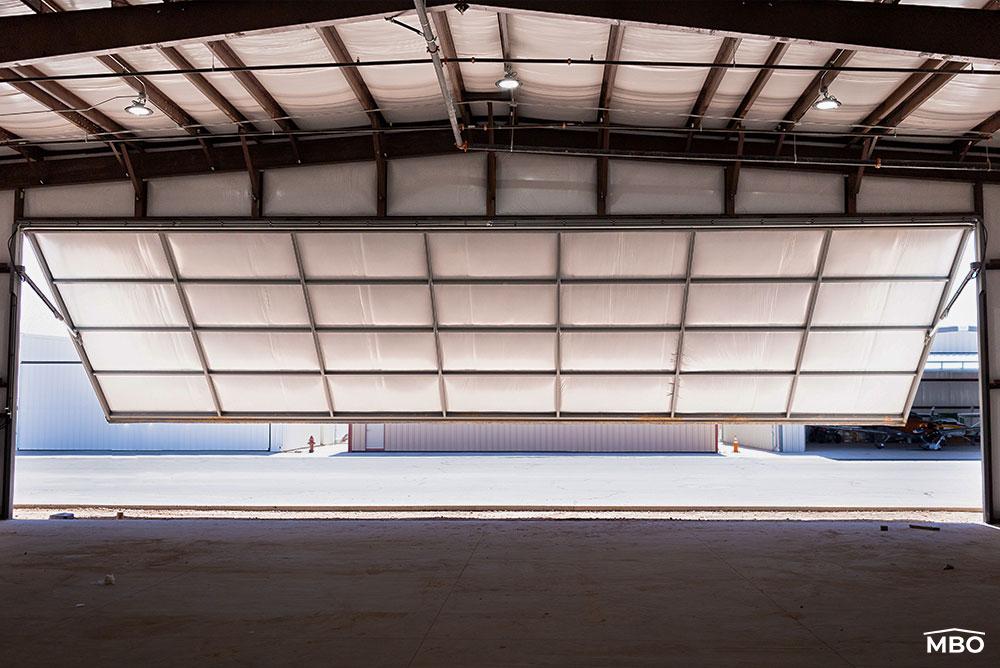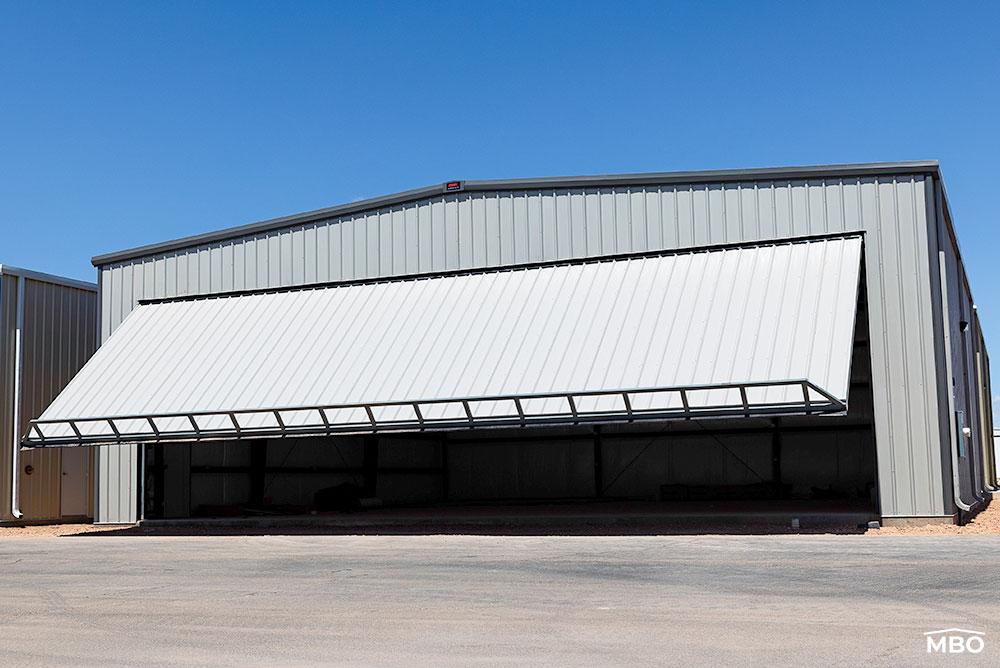Steel Airplane Hangars at Utah’s St. George Regional Airport
Construction is underway on six new steel airplane hangars at Utah’s St. George Regional Airport.
The new hangars started taking shape after one of the airport’s flight instructors, who is also a contractor, erected a single Metal Building Outlet T-hangar on the grounds. After seeing it, other hobby pilots asked him to help construct similar buildings for their own aircraft.
Each owner got to choose their own building colors and finishes, but all six hangars complement one another nicely, maintaining cohesiveness throughout the grounds. When the airport required that all its hangars have fire suppression systems, MBO’s buildings were already designed to accommodate these features, helping avoid a costly retrofit job.
When buying and designing the metal hangars, the contractor and his team prioritized cost efficiency, quality building materials, ease of erection and clear communications, and Metal Building Outlet delivered on all counts. Construction on the hangars is set to wrap in late 2023 and will help cement the airport’s burgeoning status as a key player in the regional aviation industry.
Steel Hangar Specs and Details
Metal Building Outlet supplied the following for the St. George Regional Airport:
- (1) 50’x420’ roof-only or “T” hangar
- (6) 65’x60’x20’ hangars
All hangars have wide Powerlift hydraulic doors that can accommodate planes with varying wingspans. Some also have overhead sectional doors that create separate access points and allow for the storage of RVs or collector cars.
While Metal Building Outlet made sure the hangars could easily support the weight of the hydraulic doors, the company also engineered them with high snow loads and additional collateral loads. The collateral loads allow the hangars to support future dead loads hung from the building system, like sprinklers or HVAC equipment.
Located in southwestern Utah, St. George is part of Washington County. The city sits about 40 miles outside Springdale and about a 40-mile drive from Zion National Park.











